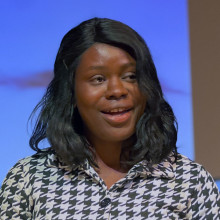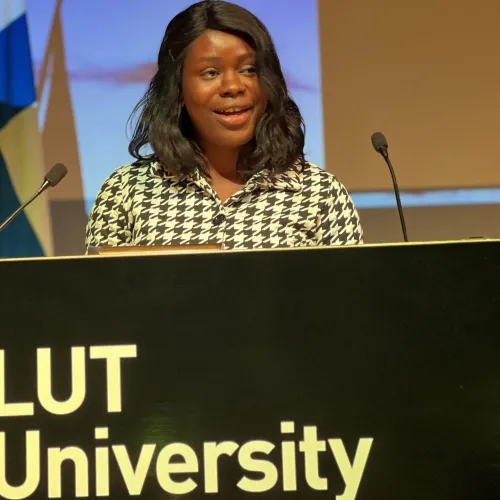
In her dissertation Hybrid Modelling Methods for Epidemiological Studies, Miracle Amadi researched parameter identification and models for predicting the spread of diseases.
Why did you choose this topic and what were your key findings?
I was interested in using mathematical and computational tools to address real-world problems and to make a positive societal impact. In my research, I focused on developing mathematical models and computational algorithms to estimate unknown parameters of disease spread models, which can help to predict the spread of infectious diseases and inform the decision-making of public health services.
My key findings include a novel method for making a bridge that enables data to be obtained in a way that it can be directly utilized for model calibration, as well as insights on the efficient usage of available data in modelling disease spread dynamics.
Your dissertation won The Finnish Inverse Problems Society’s award last year. What do you think was the secret to your success?
The award was a great honor. I believe the key to my success was a combination of rigorous research, innovative approaches, and a multidisciplinary approach that incorporated mathematics, statistics, and computational science. These elements were channelled into a research area with high practical and societal impact.
Additionally, having a supportive and understanding supervisor - Professor Heikki Haario - was definitely a significant factor in my success. His guidance, mentorship, and ability to understand my pace of work were invaluable in shaping my research and dissertation. I never felt limited in my independence as a researcher while working with my supervisor, which allowed me to collaborate with researchers from other universities and publish three papers therefrom.
After your public examination, you’ve worked at LUT as a researcher. Tell us more about your work and what problems you’re aiming to solve.
My work involves developing further mathematical models and computational algorithms for solving inverse problems related to epidemiology. One of my current works is a multidisciplinary collaborative research project with the aim of investigating the pattern and implications of the decline in the level of vaccine-induced antibodies based on a follow-up of a cohort of MMR-vaccinated subjects in Finland.
The work seeks to estimate the population-level measles protection in light of antibody measurements to ascertain if there may be a need for another vaccination dose in the future. The work is done in collaboration with experts from Terveyden ja hyvinvoinnin laitos (THL), who also provided the data.
What do you enjoy most about your work?
Through my work, I can use my skills and knowledge to address real-world challenges that have a positive societal impact. It is rewarding to see how mathematical and computational tools can be applied to complex problems to gain insight and inform decision-making.
I also appreciate the collaborative nature of my work, which allows me to learn from and work with experts from different disciplines. Most importantly, I enjoy the fact that I can learn something new every day.
What kind of ambitions do you have for your career in the future?
In the future, I aspire to continue my research and make further contributions to the field of inverse problems and its applications. I aim to collaborate with other researchers and institutions to tackle pressing societal challenges and improve public health outcomes.
I also have a keen interest in mentoring and educating the next generation of researchers in this field and thus I have recently completed professional training programs on teaching and supervision. I am excited to continually put my new skills and knowledge into use.
Why did you choose to study at LUT?
After I graduated with a double degree from a master’s program that was a product of an affiliation between LUT and The African Institute for Mathematical Sciences (AIMS), I continued with my doctoral program here because I was impressed with the academic structure of LUT. Also, the enormous diversity of nationalities at LUT encouraged me to continue here.
How do you find LUT as a working place?
LUT is a stimulating and supportive environment for research and innovation. The university provides ample opportunities for professional development, collaboration with other researchers, and access to resources for conducting cutting-edge research. I also appreciate the inclusive and diverse community at LUT.
More information:







